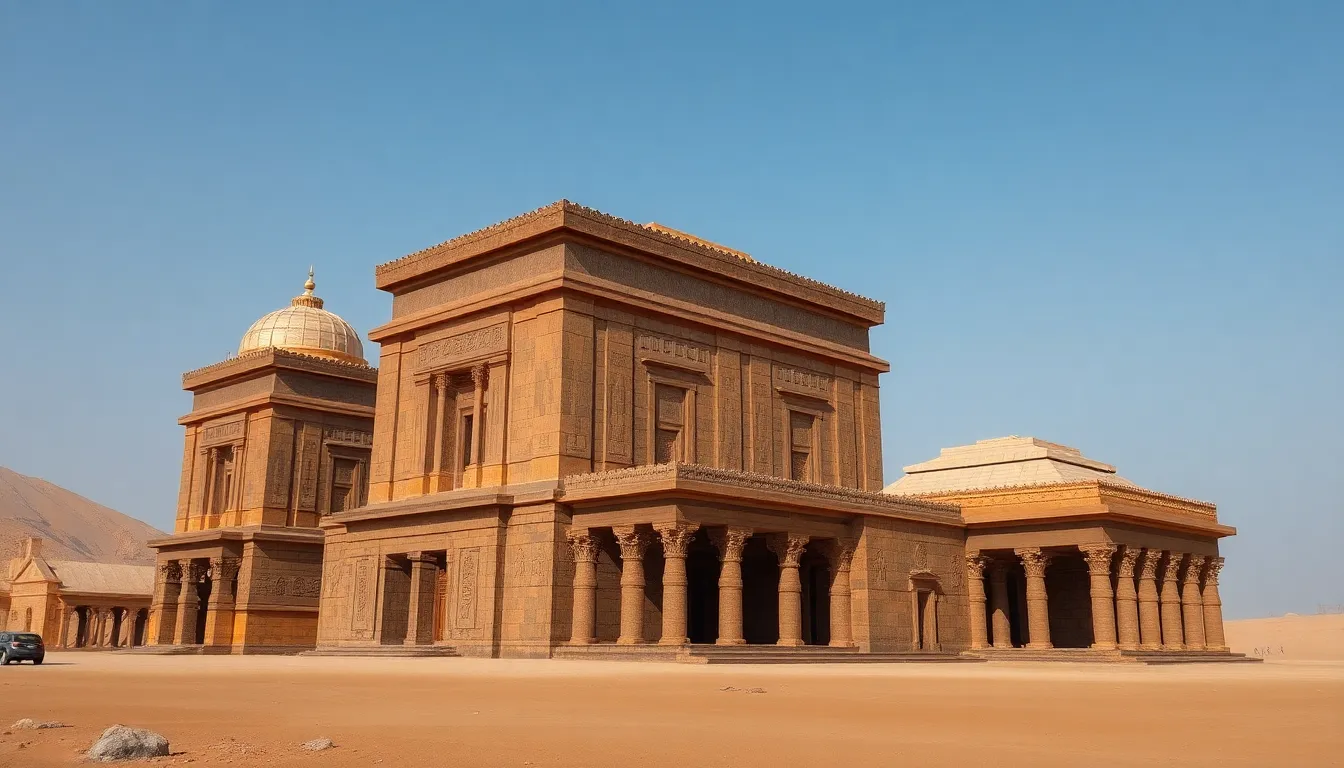The Evolution of Royal Tomb Designs Through Dynasties
I. Introduction
The royal tomb has always held a significant place in the historical and cultural narratives of civilizations. These final resting places not only serve as a testament to the power and wealth of the deceased but also reflect the beliefs, artistry, and architectural advancements of their respective eras. This article will explore the evolution of royal tomb designs through various dynasties, highlighting how these sacred spaces have transformed over time and across cultures.
II. Ancient Beginnings: The Foundations of Royal Tomb Architecture
Royal tomb architecture has its roots in ancient burial practices, which were deeply intertwined with beliefs about the afterlife. These beliefs motivated early societies to create elaborate structures that would ensure the safe passage of their rulers into the next world.
Some notable examples of early tomb designs include:
- The Pyramids of Egypt: The most iconic royal tombs, particularly the Great Pyramid of Giza, which reflects not only the technological prowess of ancient Egyptians but also their profound beliefs in the afterlife.
- Mesopotamian Ziggurats: These stepped temples served both as structures for worship and as burial sites, showcasing the dual purpose of tombs in ancient cultures.
III. Classical Influences: Greece and Rome
The transition from monumental burial mounds to more elaborate tomb structures can be traced back to the influences of Greek and Roman cultures. In these civilizations, tomb design evolved significantly, incorporating new architectural styles and artistic elements.
Key aspects of tomb design during this period include:
- Architectural Styles: The Greeks introduced the use of columns and pediments, while the Romans developed the arch and vault, leading to grander and more durable structures.
- Art and Sculpture: Tombs became canvases for artistic expression, featuring intricate sculptures that depicted the deceased in idealized forms, symbolizing their status and virtues.
IV. The Rise of the East: Dynastic Tombs in China
In ancient China, particularly during the Shang and Zhou dynasties, burial practices were steeped in ritual and tradition. The design of royal tombs reflected the social hierarchy and cultural beliefs of the time.
Noteworthy elements include:
- The Terracotta Army: Discovered near the tomb of Qin Shi Huang, this massive collection of life-sized statues served to protect the emperor in the afterlife, illustrating the importance of burial goods.
- Confucian Influence: During the Han Dynasty, Confucian principles shaped funerary architecture, emphasizing harmony and respect for ancestors, which influenced the layout and design of tombs.
V. The Islamic Golden Age: Tombs of Grandeur
The Islamic Golden Age saw the development of elaborate mausoleums and gardens, reflecting the intertwining of architecture, spirituality, and nature. These structures often served as both tombs and places of reflection.
Significant examples include:
- The Taj Mahal: A UNESCO World Heritage Site, this mausoleum is celebrated for its stunning beauty and intricate design, symbolizing love and loss.
- Mausoleums and Gardens: Islamic tombs often featured lush gardens, symbolizing paradise, and served as serene spaces for contemplation.
Islamic tomb designs are rich in symbolism, often incorporating calligraphy and geometric patterns that reflect the spiritual beliefs of the culture.
VI. European Renaissance: Revival and Innovation
The European Renaissance marked a period of renewed interest in classical antiquity, which profoundly influenced tomb architecture. Humanism, with its focus on individualism and the human experience, significantly impacted design.
Noteworthy examples from this era include:
- The Tombs of St. Peter’s Basilica: These elaborate tombs reflect the grandeur of the Renaissance and the Catholic Church’s power, featuring stunning artworks and intricate designs.
- The Medici Chapel: A testament to the Medici family’s influence, this chapel integrated art, science, and spirituality, showcasing the importance of legacy in burial practices.
VII. Modern Interpretations: The 19th and 20th Centuries
The 19th and 20th centuries brought significant shifts in royal tomb design, mirroring changing societal values and advancements in technology. Modern interpretations often reflect contemporary beliefs about death and memorialization.
Key trends during this period include:
- Contemporary Royal Tombs: Structures such as the memorials for Queen Victoria and other modern royals showcase a blend of traditional and modern design elements.
- Technology and Materials: Advances in construction materials and techniques have allowed for more innovative and sustainable burial designs, reflecting contemporary values regarding the environment and memorialization.
VIII. Conclusion
The evolution of royal tomb designs through dynasties shows a rich tapestry of cultural identity, religious beliefs, and artistic expression. From the monumental pyramids of ancient Egypt to the elegant mausoleums of the Islamic Golden Age and the innovative designs of the modern era, these structures continue to shape collective memory and cultural identity.
As societies evolve, so too will burial practices and designs, reflecting the enduring human desire to honor and remember those who have passed. The legacy of royal tombs will undoubtedly continue to influence architectural trends and cultural practices in the future.




